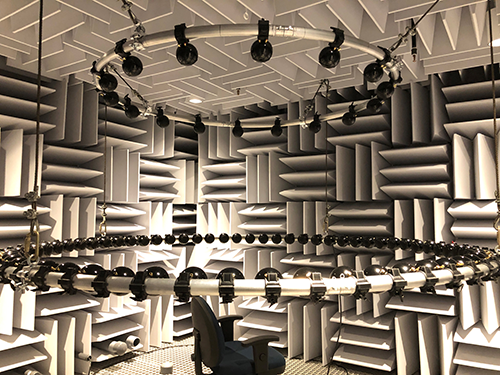Spatial Hearing Laboratory
How do we use sound to make sense of the complex and ever-changing world around us? What are the neural mechanisms that allow us to localize, tell apart, and understand multiple sound sources in the presence of echoes, reverberation, and competing sounds?
We use several kinds of studies to address these questions. Behavioral experiments allow us to study how listeners perceive auditory space and the particular kinds of acoustic information they use to do so. We use large arrays of loudspeakers to simulate different listening situations and virtual-reality technology to study the impacts of vision and audition on spatial awareness by typical and hearing-impaired listeners, as well as the spatial functions of hearing aids. Brain imaging studies allow us to map the brain regions involved in processing that information, and computer simulations of brain networks help us understand how sounds are transformed by the brain, the ear, and listening devices.
As our understanding of the auditory brain becomes more detailed, we hope to combine these approaches ever more closely to better understand the specific brain events underlying spatial perception in acoustically complex environments.
Below: Anechoic chamber at Boys Town National Research Hospital

